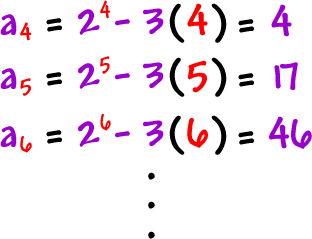

This is a series formed by the combination of both arithmetic and geometric series. The alternating terms of twin series can generate another independent series.Īn example of the twin series is 3, 4, 8, 10.13, 16, ….By closely examining this series, two series are generated as 1, 3, 8,13 and 2, 4, 10,16. Twin seriesīy definition, a twin number series comprises a combination of two series. Similarly, the 7 th term is calculated as 8 + 5 = 13. The general formula for cube number series is:Ī mathematical series consists of a pattern in which the next term is obtained by adding the two terms in-front.Īn example of the Fibonacci number series is:įor instance, the third term of this series is calculated as 0+1+1=2. Cube seriesĬube number series is a series generated by the multiplication of a number 3 times by itself. This sequence repeats itself by squaring the following integers: 2, 3, 4, 5, 6……. Take a look at the square number series 4, 9, 16, 25, 36………. Square numbers are always positive the formula represents a square number of series Square seriesĪ square number is simplifying the product of an integer with itself. It is possible to get a sequence by adding dots in another row and counting all the dots. This pattern is generated from dots that fill a triangle. Take an example of the following triangular series: For a triangular number, the dot shows the amount of dot required to fill a triangle. This is a number series in which the first term represents the terms linked to dots presented in the figure. In this case, the common ratio is found by dividing the predecessor term with the next term. To calculate the 7 th term, identify the first as 2, common ratio as 2 and n = 7.Ī geometric series can consist of decreasing terms, as shown in the following example: The geometric number series is generalized in the formula:įor example, given a sequence like 2, 4, 8, 16, 32, 64, 128, …, the n th term can be calculated by applying the geometric formula. The geometric series is a number series where the following or next number is obtained by multiplying the previous number by constant known as the common ratio. We can use the arithmetic formula to find any term in the series. The common difference, in this case, is -2. There can be a negative common difference as illustrated in the number series below: It important to note that the common difference is not necessarily a positive number. For instance, to find the 5 th term using the arithmetic formula Substitute the values of the first term as 3, common difference as 5, and the n=5 The common difference is found as 8 – 3 = 5 X 1 is the first term, n is the number of terms and d is the common difference between two consecutive terms.īy taking an example of the number sequence: 3, 8, 13, 18, 23, 28…… When the first term, denoted as x 1, and d is the common difference between two consecutive terms, the sequence is generalized in the following formula: This is a type of number sequence where the next term is found by adding a constant value to its predecessor. There are many number sequences, but the arithmetic sequence and geometric sequence are the most commonly used ones.

The pattern of the sequence is, therefore, the addition of 8 to the preceding term. Identify the pattern of the sequence by finding the difference between two consecutive terms. What is the value of n in the following number sequence? The missing terms are therefore: 8 + 4 = 12 and 16 + 4 = 20 You can notice that the corresponding number is obtained by adding 4 to the preceding number. Three consecutive numbers, 24, 28, and 32, are examined to find this sequence pattern, and the rule obtained. The consecutive number is obtained by adding 3 to the preceding integer.įind the missing terms in the following sequence: The other list is a sequence because there is a proper order of obtaining the preceding number. The first list of numbers does not make a sequence because the numbers lack proper order or pattern. For this case, it is important to learn and practice number sequence. By learning and excising number sequence, an individual can sharpen their numerical reasoning capability, which helps our daily activities such as calculating taxes, loans, or doing business. Logic numerical problems generally consist of one or two missing numbers and 4 or more visible terms.įor this case, a test designer produces a sequence in which the only one fits the number. A sequence that continues indefinitely without terminating is an infinite sequence, whereas a sequence with an end is known as a finite sequence. Number sequence is a progression or an ordered list of numbers governed by a pattern or rule.


 0 kommentar(er)
0 kommentar(er)
